Your cart is currently empty!
Author: admin
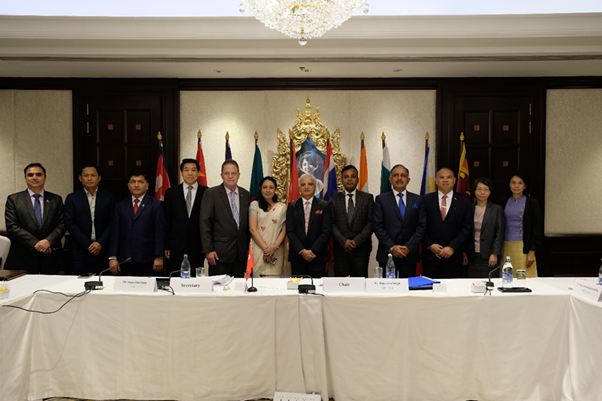
India’s Leadership in Global Disaster Risk Reduction: Honouring Shri Rajendra Singh as the Chair of ADPC
India has always been at the forefront of disaster risk reduction (DRR) and climate resilience, not only domestically but also on the global stage. With Prime Minister Narendra Modi at the helm, India’s role in shaping policies and frameworks for DRR has taken significant strides, gaining recognition for its leadership. One of the most remarkable achievements in recent years is India assuming the Chair of the Asian Disaster Preparedness Centre (ADPC) for the year 2024-25, with Shri Rajendra Singh, Member and Head of Department (HoD) of the National Disaster Management Authority (NDMA), at the forefront. This article pays tribute to Shri Rajendra Singh and India’s global leadership in disaster management.
India’s Rising Influence in Global DRR
Under the leadership of Prime Minister Narendra Modi, India has solidified its position as a key player in disaster management and climate resilience. From domestic initiatives to global platforms, India has taken decisive action to mitigate the impacts of natural disasters. Among the most notable of these efforts is the establishment of the Coalition for Disaster Resilient Infrastructure (CDRI), which has brought together countries worldwide to collaborate on enhancing the resilience of critical infrastructure against disasters.
Taking over the Chair of ADPC is yet another testament to India’s commitment to fostering cooperation in disaster preparedness and risk reduction on a regional and global scale. The ADPC, which was founded in 1986, is an autonomous international organization that plays a pivotal role in promoting DRR and climate resilience in Asia and the Pacific. India, along with eight other neighboring countries—Bangladesh, Cambodia, China, Nepal, Pakistan, Philippines, Sri Lanka, and Thailand—are the founding members of ADPC, further underscoring India’s long-standing involvement in regional cooperation for disaster management.
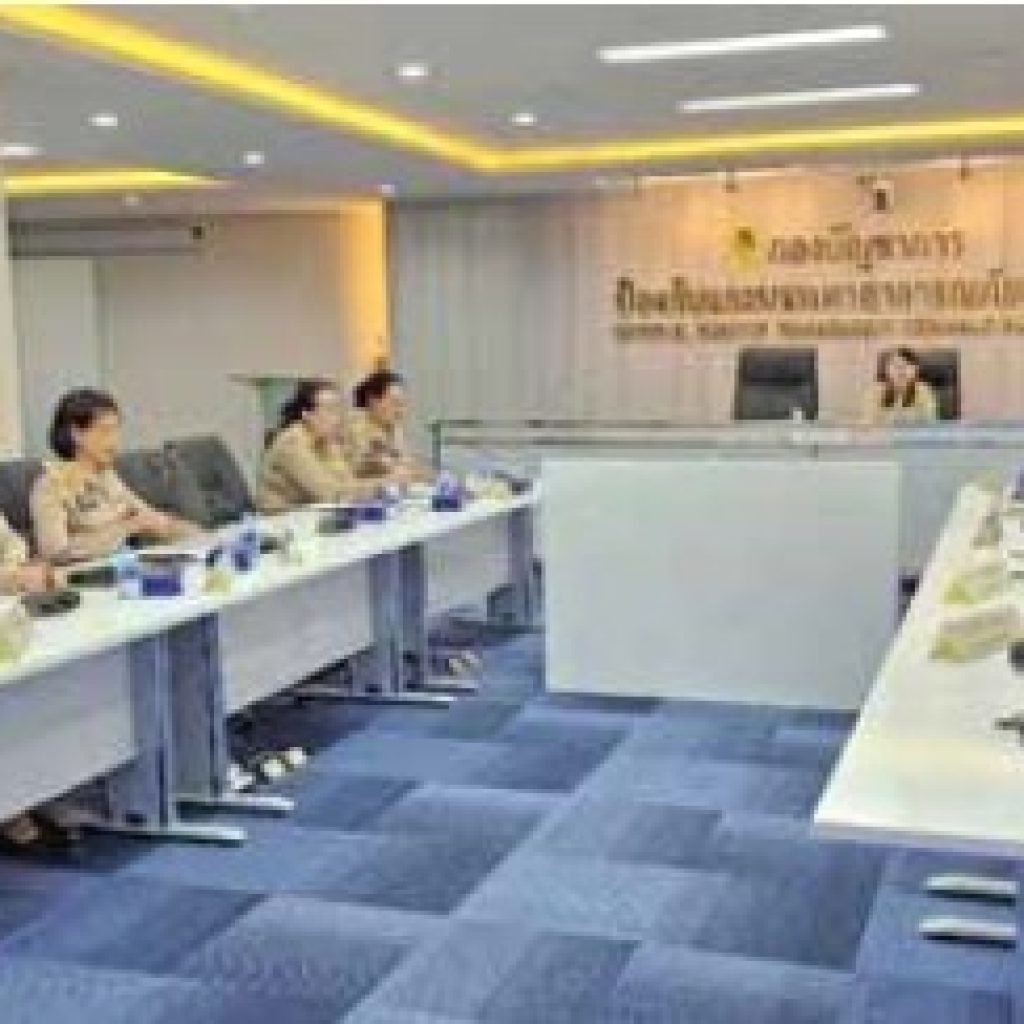
A Historic Transition in Leadership
On July 25, 2024, Shri Rajendra Singh officially assumed the Chair of ADPC from the People’s Republic of China, marking a significant milestone in India’s journey toward global leadership in disaster preparedness. The transition took place in Bangkok, Thailand, where Shri Singh represented India at the 5th Board of Trustee (BoT) meeting of ADPC. India’s chairmanship for 2024-25 highlights the nation’s unwavering commitment to disaster risk reduction and the advancement of climate resilience in one of the most disaster-prone regions of the world.
As Chair of ADPC, Shri Rajendra Singh brings his vast experience and expertise in disaster management to the table, ensuring that India’s leadership will be both impactful and visionary. His role as HoD of NDMA, the nodal agency responsible for disaster management in India, positions him as an influential figure in shaping not just national but regional strategies for disaster preparedness, response, and recovery.
Advancing Disaster Risk Reduction in Asia and the Pacific
Asia and the Pacific regions are among the most vulnerable to natural disasters, including earthquakes, floods, cyclones, and tsunamis. The ADPC plays a crucial role in mitigating these risks by working with governments, civil society organizations, and international agencies to build resilience at every level—from local communities to national infrastructure. Under India’s leadership, the focus will be on bolstering cooperation among member countries, sharing knowledge and best practices, and promoting innovative approaches to disaster preparedness.
Shri Rajendra Singh’s chairmanship will likely bring a renewed focus on climate resilience, an area where India has already made significant progress. With climate change increasing the frequency and severity of extreme weather events, building resilience against such shocks is imperative. The work being done by ADPC, under India’s leadership, will ensure that countries in the Asia-Pacific region are better equipped to face the challenges posed by climate variability and other environmental risks.
A Global Role Model in DRR
India’s leadership in ADPC comes at a time when the world is recognizing the importance of international collaboration in addressing the multifaceted challenges posed by disasters. India’s proactive approach to disaster management—marked by initiatives like the CDRI—has set an example for other countries to follow. The CDRI, launched in 2019, serves as a platform for knowledge exchange and collaboration between countries, with a focus on making infrastructure more resilient to disasters. This initiative has gained momentum under India’s leadership, and its relevance continues to grow as climate-induced disasters become more frequent and severe.
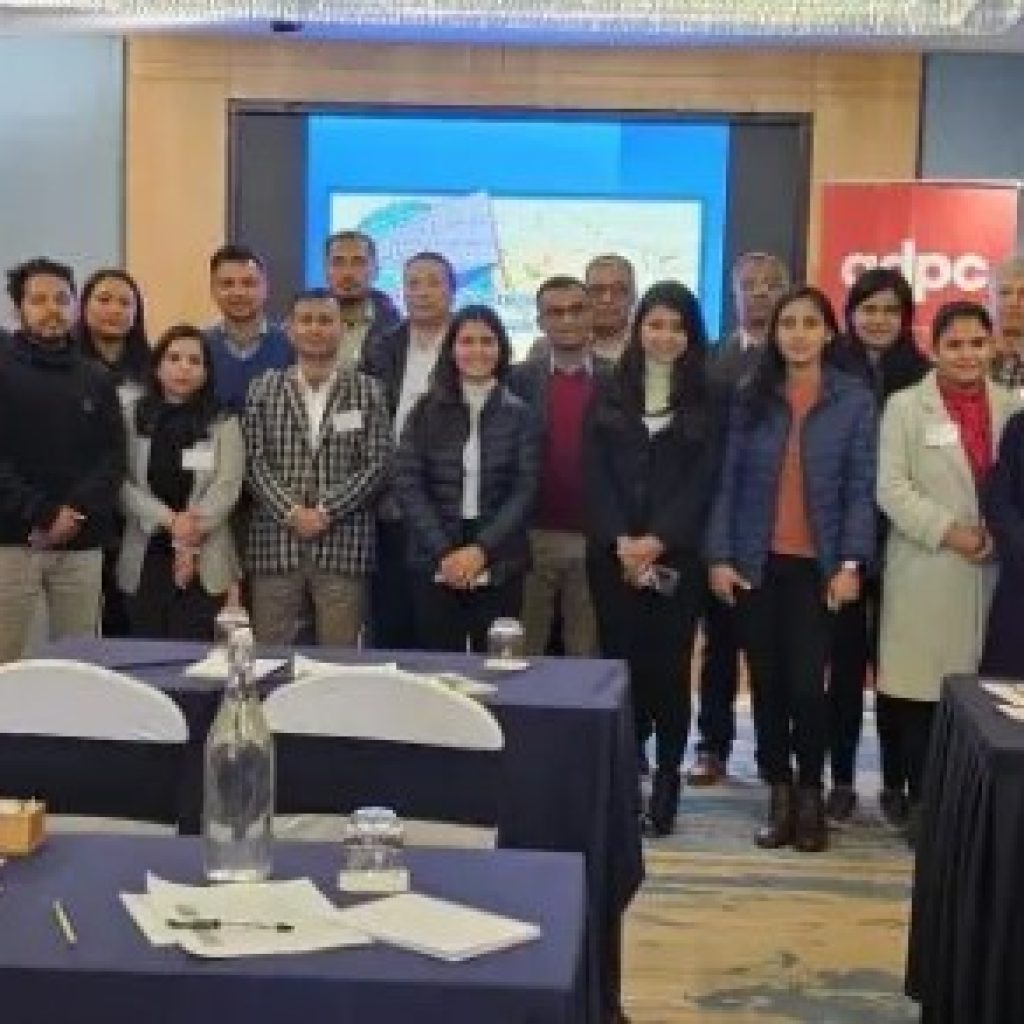
Celebrating the Legacy of Shri Rajendra Singh
Shri Rajendra Singh’s appointment as Chair of ADPC is a reflection of his significant contributions to disaster management in India and beyond. His tenure at NDMA has been marked by innovative approaches to disaster risk reduction, including capacity building, technological interventions, and the development of community-based strategies for disaster preparedness. His leadership has been instrumental in strengthening India’s disaster management framework, which is now regarded as one of the most comprehensive and robust in the world.
Shri Singh has always emphasized the importance of community involvement in disaster management, advocating for a bottom-up approach that empowers local populations to take ownership of disaster preparedness and response. His work with NDMA has helped bridge the gap between government agencies and vulnerable communities, ensuring that disaster risk reduction efforts reach those who are most at risk.
India’s Vision for the
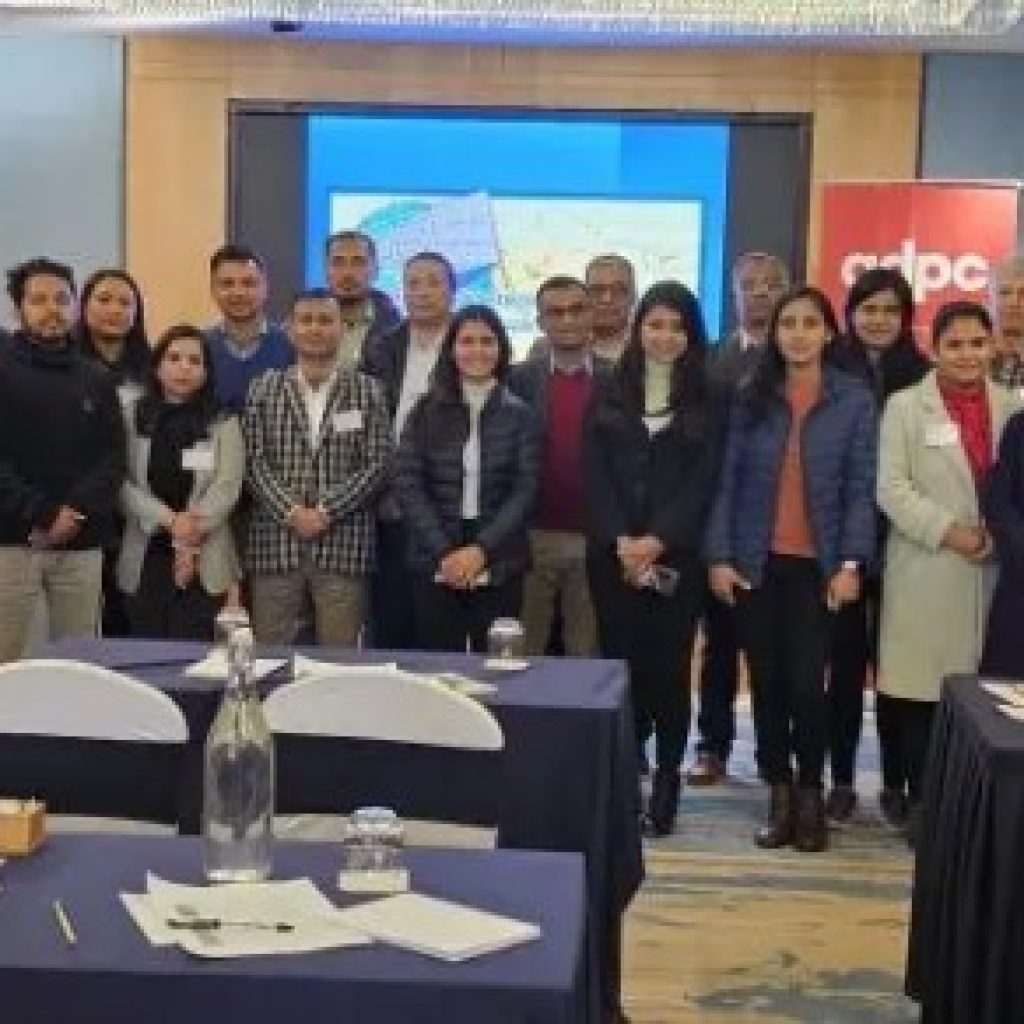
Future of DRR
As Chair of ADPC, Shri Rajendra Singh will continue to champion the cause of disaster risk reduction and climate resilience, not just in India but across the Asia-Pacific region. Under his leadership, ADPC will likely prioritize initiatives that promote sustainable development, climate adaptation, and inclusive disaster management. India’s vision for DRR is one that recognizes the interconnectedness of social, economic, and environmental factors and seeks to build resilience in a holistic manner.
India’s chairmanship of ADPC comes at a critical juncture when the world is grappling with the impacts of climate change, and the need for effective disaster management has never been more urgent. Shri Singh’s leadership will undoubtedly steer ADPC towards achieving its goals of building a safer, more resilient Asia-Pacific region, while also advancing India’s role as a global leader in disaster risk reduction.
A New Era of
Cooperation and
Innovation
Under India’s leadership, ADPC is expected to explore new avenues of cooperation with international organizations, private sector stakeholders, and academic institutions to enhance the understanding of disaster risks and promote innovative solutions. The use of data and technology will be at the forefront of these efforts, with a particular emphasis on early warning systems, disaster forecasting, and climate modeling.
India has already made significant progress in these areas through its collaboration with global partners, and Shri Rajendra Singh’s chairmanship will provide an opportunity to further strengthen these partnerships. The use of big data and artificial intelligence in disaster management will likely be a key focus area, enabling countries to better predict and prepare for disasters before they occur.
A Global Tribute to Shri Rajendra Singh
In recognizing Shri Rajendra Singh’s appointment as Chair of ADPC, we celebrate not just his personal achievements but the broader success of India’s leadership in disaster risk reduction. His contributions have had a profound impact on the way disasters are managed in India, and his new role as Chair of ADPC will allow him to extend this influence to a global scale.
Shri Singh’s leadership is an embodiment of India’s commitment to creating a safer, more resilient world for future generations. His work has helped lay the foundation for a disaster management framework that is inclusive, innovative, and responsive to the needs of the most vulnerable. India’s assumption of the Chair of ADPC for 2024-25 under the leadership of Shri Rajendra Singh marks a pivotal moment in global disaster management. As the world faces increasing risks from climate change and natural disasters, India’s leadership will play a crucial role in shaping the future of disaster risk reduction and resilience in the Asia-Pacific region. This is a moment of pride for India and a testament to the tireless efforts of Shri Rajendra Singh and his team at NDMA, who continue to lead the way in building a safer, more resilient world.

Fire Safety Measures in Karnataka -Ashit Mohan Prasad, IPS (Rtd.) DGP Karnataka
Fire hazards have become a common feature in urban areas with the demand for more high-rise buildings, emphasis on maximum utilisation of space, and consequent reduction in setback areas. With the rapid migration to cities from rural areas and the urban population touching about 45%, the pressure on urban space has exploded to unimaginable levels. This has led to massive commercialisation relegating fire safety to a low priority. Therefore, when a fire breaks out, it has massive human and economic costs. During the pandemic, we saw several hospitals, on account of the high demand for admission of patients and the consequent pressure on facilities, there were several cases of fire incidents reported across the country. Repeatedly, questions were raised on the inability of the Fire Department to regulate, prevent, and controlsuch hazards.

During the Carlton House Fire tragedy in Bengaluru on February 23, 2010, 72 were injured, three persons jumped off the building and lost their lives, and six others succumbed to burns. This was an eye-opener for us. In response to a PIL filed in 2011, the Hon’ble High Court made it mandatory for the Fire Department to issue a No Objection Certificate (NOC) every two years to all residential/commercial buildings. The Court further ruled that BBMP Building Bye-Laws and Revised Master Plan must meet safety standards as prescribed in the National Building Code (NBC). The Fire Department should inspect buildings routinely, impose penalties and suspend services in case of noncompliance. The immediate response of the State Government was to launch the KSAFE project spreadover five years with an increased financial allocation of Rs 323.30 Crores to strengthen and improve the infrastructure of the Fire Department. It led to installations of fire stations in urban/peri-urban/rural areas, thereby reducing the response time; acquisition of modern equipment/fire tender, including the aerial ladder for high rise buildings, and skill upgradation/capacity building of the fire personnel. Thus, the government made a conscious effort in the aftermath of the tragedy to improve the efficacy of the Fire and Emergency Services in Karnataka.
The National Building Code (NBC) of India is a comprehensive Building Code providing guidelines for regulating building construction activities. It serves as a model code for adoption by all agencies involved in building construction works, which inter alia, includes demarcation of fire zones, restrictions on the construction of buildings in each fire zone, classification of buildings based on occupancy, and types of building constructions according to fire resistance.
NBC broadly covers Fire Prevention, Life Safety, and Fire Protection. Fire Prevention covers the design and construction of buildings. Life Safety addresses construction and occupancy feature necessary to minimise danger to life from fire, smoke, fumes, or panic. Fire Protection are guidelines for selecting the correct type of equipment and installations meant for fire protection of the building depending on classifications and types.
NBC have guidelines for fire drills and evacuations for high rise buildings. Based on occupancy, use and height, all buildings must be equipped with fire extinguishers, wet risers, automatic sprinklers installations, water sprays, etc. NBC regulations can be enacted or adopted by the Municipal administration and public/private bodies. It lays down a set of minimum provisions designed to protect public safety regarding fire hazards. The adoption and subsequent implementation of the NBC by the Karnataka Fire and
Emergency Services have been immediate and wholesome. A robust, vibrant system including standardised protocol has been evolved over some time for giving fire clearances online, avoiding unnecessary delays and bottlenecks.A fire license is required to be issued in a time-bound manner to commercial/residential/public buildings over 15 meters in height to carry out business and trading activities as listed in the Karnataka Emergency and Fire Service Rules 1971, adhering strictly to the NBC guidelines. This also includes giving fire clearance to educational institutions based on structural fire safety criteria specified in the NBC. Such a certificate needs to be renewed every five years. Institutions are allowed to function only if they possess a No Objection Certificate (NOC), Compliance Certificate (CC) and Advisory Certificate from the Fire Department. These require a renewal every two years.
Despite a standard protocol of fire safety in place, there is a need for better coordination between officials from the departments of Town Planning, Municipal Administration, Rural Development, Accounts & Treasury, and Forest. Although the KSAFE programme contributed significantly to strengthening the fire infrastructure in urban/rural areas, the programme needs to be continued with increased financial allocation to further upgrade fire stations in mobility, skill, and equipment which can
significantly reduce the response time and minimise the collateral damages in an event of Fire incidents.The Karnataka Fire Services Act – 1964, Karnataka Fire Service Rules – 1971, and Karnataka Fire Manual – 1979, need revision in light of the NBC guidelines and the experience gained over the last few decades. The additional responsibilities of implementing rules concerning fire safety, empanelment of agencies to conduct fire audits, centralised filing of fire audit reports of buildings/industries and creating awareness on fire safety including compulsory fire insurance for certain types of buildings need to be taken up urgently.
High-rise buildings developed before NBC 2016, pproximately about 10,000 in Bengaluru city, need to mandatorily obtain a Fire Compliance Certificate by installing fire safety measures within their premises. These buildings do not have NOC/CC and, therefore, cannot implement external fire safety guidelines. They must be mandated to install internal fire safety mechanisms like a greater number of fire extinguishers, smokescreens in staircases and water curtains in basements. Another concern is the minimum setback space that should be six meters to be kept around the building for manoeuvring fire tenders during an emergency. Several apartments have violated these norms deliberately, often using these spaces for other purposes. These violations should be stopped since they hamper firefighting operations.
Finally, the most important aspect of these efforts and interventions is creating public awareness about fire hazards. This requires community support. Experiences from recent years have shown that awareness has led to a significant decline in fire incidents and a reduction in concomitant losses in terms of life and property. The community plays a decisive role as a first responder in minimising the damage – from immediate evacuation to creating sterile zones to prevent the spread of fire. It is incumbent on the Fire Department to take this responsibility as a challenge and ensure the participation of citizens in fire drill exercises at regular intervals through the involvement of schools, colleges, resident welfare associations and housing societies, etc. Similar efforts are required in semiurban and rural areas also.

Vietnam and Nuclear Energy – An Emerging Power -By New Media Team
Considering the numerous developing economies, it raises the question of whether Vietnam will contemplate nuclear energy in the future. The relationship between the United States and
Vietnam is multifaceted, encompassing political, economic, and cultural aspects. Since 1995, there have been notable transformations in this relationship.As on date though, Vietnam does not have any operational nuclear power plants.
In the past, Vietnam had shown keen interest in developing nuclear energy as a means to meet its growing electricity demand, reduce its reliance on fossil fuels, and mitigate climate change. The
Vietnamese Government had planned to build the country’s first nuclear power plant in NinhThuan province with the assistance of foreign partners.Vietnam signed agreements with Russia and Japan to build nuclear power plants, and the NinhThuan 1 Nuclear Power Plant was scheduled to be operational by 2028. However, in 2016, Vietnam decided to
postpone the construction due to economic concerns and changes in the country’s energy development plan. The decision was influenced by factors such as high costs, safety concerns, and public opposition.Since then, Vietnam has shifted its focus more towards renewable energy sources such as hydropower, solar power, and wind power. The Vietnamese Government has set renewable energy targets and has been actively promoting the development of these clean energy sources.
This general target was verified in a nuclear power development plan approved by the government in August 2007, with the target being raised to an aggregate of 8000 MWe nuclear by 2025. A general law on nuclear energy was passed inmid-2008, and a comprehensive legal and nonsupervisory frame was also being developed. Two reactors totalling 2000M We were proposed at PhuocDinh in the
southern NinhThuan fiefdom, as well as a farther binary unit 2000 MWe factory at VinhHai. These two shops were to be followed by a farther 6000 MWe by 2030. Both locales were chosen grounded
particularly on geological felicity on the seacoast.A high-demand projection recommends the installation of 8,000M We (megawatts electrical) by 2025 and 15,000 MWe (10% of the total) by 2030, distributed across eight locations within five industries. This plan includes the addition of four additional units to the initial two locations, as well as the establishment of six additional units at three or four centralized sites in QuangNgai (DucThang or DucChanh), BinhDinh (Hoai My), and PhuYen(Xuan Phuong).
Atomstroy export, Westinghouse, EdF, Kepco, and China Guangdong Nuclear Power Group (CGNPC) have all expressed significant interest in supplying the initial two twin-unit nuclear power plants. In 2010, unverified reports suggested that the Japanese Government, along with Tepco and other companies, offered an $11 billion contract for the project. Additionally, a consortium comprising
Mitsubishi, Toshiba, and Hitachi also made an offer. It is worth noting that the power plants were intended to be state-owned under Power of Vietnam (EVN), without any private equity involvement.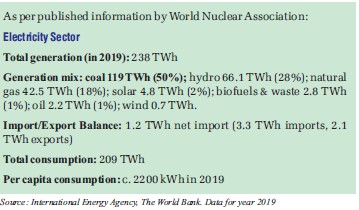
Formerly Proposed Nuclear Power Reactors
In July 2011, the Government of Vietnam released a master plan outlining the development of the NinhThuan 1&2 Nuclear Power Plants. The plan proposed a total of eight reactors in the 1000 MWeclass, with one reactor scheduled to come online each year from 2020 to 2027. Additionally, two larger reactors were planned to be operational by 2029 at a centralised location. The Ministry of Industry & Trade (MOIT) was assigned the responsibility for implementing the actual projects, while the Ministry of Science & Technology (MOST) supported the programme by creating a master plan and providing guidance.
In January 2014, the Vietnamese government announced a delay of up to four years in the development of nuclear power, citing ongoing negotiations related to technology and financing. The delay was also attributed to the recommendation of the International Atomic Energy Agency (IAEA), which advised additional time for thorough preparation.
Subsequently, in January 2015, the Vietnam Atomic Energy Agency (VAEA) announced another significant delay, pushing the start of construction to around 2019. These delays were necessary to ensure
comprehensive readiness and proper planning for the nuclear power projects.In March 2016, the Vietnamese Government announced that the commissioning of the first reactor was scheduled for 2028. This revised timeline aligned with the modifications made to the National Nuclear Power Development Plan, which extended until 2020. The plan anticipated that by 2030, approximately 4,600 MWe of nuclear capacity would be operational in Vietnam.
However, in November 2016, the National Assembly made a resolution to indefinitely postpone the plans for the two nuclear power plants due to the prevailing financial conditions in Vietnam at that time, as well as lower demand projections. Instead, the focus shifted towards the development of 6 GWe (gigawatts electrical) of liquefied natural gas (LNG) and coal power generation by 2030, driven by short-term cost considerations associated with these fuels. The planal so included the importation of electricity, particularly from Laos, and the utilisation of renewable energy sources to complement the domestic power supply.
In an earlier development, in February 2014, Doosan Heavy Industries Vietnam Ltd (Doosan Vina) achieved ASME certification, making it the first company in Southeast Asia to be certified for the production of nuclear components.
The company, Doosan Heavy Industries Vietnam Ltd (Doosan Vina), was established in 2007. In March 2022, the Ministry of Industry and Trade released a draft development plan proposing the inclusion of Small Modular Reactors (SMRs) in Vietnam’s energy mix after 2030. The plan aimed to incorporate SMRs as a future energy source.

In June 2022, the Minister of Industry and Trade addressed the National Assembly, emphasising that the development of nuclear power is a non going and inevitable trend globally. While
the Government remains committed to increasing renewable energy capacity, he highlighted the necessity of having a stable energy source for the country. This suggests that despite the focus on renewables, there is recognition of the need for a reliable and consistent energy supply, potentially opening the door for future consideration of nuclear power or other stable energy sources.NinhThuan 1: PhuocDinh (Russia)
A pre-feasibility study for this plant carried out by the MOIT was approved by the National Assembly in November 2009, and a comprehensive feasibility study followed. In May 2010, the Prime
Minister established the NinhThu an Nuclear Power Project. The NinhThuan Project Management Board functioned under EVN.In October 2010, an intergovernmental agreement was signed for Atomstroy export to build the NinhThuan 1 Nuclear Power Plant, using two VVER- 1000 reactors based on those at Tianwan in China. However, in October 2014, it was decided to use the later AES-2006 nuclear plants with VVER-1200 reactors. It was to be constructed as a turnkey project. In July 2015 EVN and NIAEP-Atomstroyexport
signed a general framework agreement for construction of the first unit, with the actual VVER- 1200/V-491 reactors to be supplied by Atomproekt based in St Petersburg. NIAEP-ASE is the parent company of Atomenergoproekt (AEP) which was involved in the design.Russia’s Ministry of Finance was set to fund a minimum of 85% of the plant and handle the fuel supply and retrieval of used fuel through out it so prerational lifespan, in accordance with the
standard Russian policy for nonnuclear-weapons States. In November 2011, an agreement was signed with the Russian government’s state export credit bureau to provide financing of up to $9 billion. Furthermore, a separate agreement, amounting to a $500 million loan, was made for the establishment of the Centre for Nuclear Energy Science & Technology (CNEST), a joint effort by Rosatom and MOST. It should be noted that all financing arrangements were planned to be conducted in Russian roubles and Vietnamese dong, rather than US dollars. In 2019, a Memorandum of Understanding (MoU) was signed between Rosatom and Vietnam’s Ministry of Science and Technology to facilitate the implementation of CNEST.In 2014, 344 Vietnam ese undergraduate and graduate students were studying in Russia, to prepare for the project, and 150 engineers were helping with the construction of Rostov nuclear plant in Russia. Early in 2017, 28 Vietnamese became the first international graduates of a sixy ear course on nuclear technology at Russia’s National Research Nuclear University MEPhI . Forinternation a l
ventures, Rosatom arranges both university and in-company training for nationals.The initial schedule was for construction to start in 2014 and operation from 2020, but commencement was delayed to 2019, with six years’ construction envisaged. Considerable work was done at the site before the project’s indefinite postponement, including relocating two villages with much upgrading of facilities and infrastructure.
Earlier in 2012,Rosatom helped establish a Nuclear Industry Information Centre (NIIC) at the Hanoi University of Science & Technology (HUST) based on others in 17 Russian regions. The Hanoi NIIC is the first of six international centres (Astana, Dhaka, Hanoi, Mersin, Minsk, Istanbul). It catered for 1600 visitors per month, 1300 of these being school students, and 90% being from outside Hanoi.
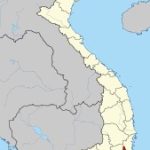
NinhThuan 2: Vinh Hai (Japan)
In October 2010, an intergovernmental agreement with Japan was signed for construction of a second nuclear power plant at VinhHai in NinhThuan province, with its two reactors to come on line in
2024-25. The following month the Government signed a further accord with Japan on this, and Japan’s Ministry of Economy, Trade and Industry (METI), said that Japan Atomic Power Co. (JAPC) and the International Nuclear Energy Development of Japan Co. Ltd. (JINED), would work with EVN on the project, which was to involve financing and insurance of up to 85% of the total cost. JINED is a consortium of Japan’s METI, nine utilities (led by Chubu, Kansai & Tepco) and three manufacturers (Mitsubishi Heavy Industries, Toshiba and Hitachi). The intergovernmental agreement took effect from January 2012.In February 2011, JAPC signed an agreement with EVN to advance the feasibility study, and in September, it signed a contract with EVN to provide consulting services to help with site selection and an 18-month, $26 million feasibility study, including technology selection with economic and financial analysis, funded by the Japanese government. The following day an MoU was signed between EVN and JINED to progress the design, construction and operation of the plant. EVN listed six criteria to apply, including late-model reactors, stable supply of fuel, support for local industry and education of staff, and financial support. Japan committed to train about 1000 staff for NinhThuan 2, and in January 2015, Westinghouse committed to train staff, too.
Vinh Hai is on Cam Ranh Bay, about 20 km north east of PhuocDinh. In October 2011, a less-formal arrangement for cooperation in construction was signed, and work on the infrastructure for construction was underway. JAPC’s feasibility study for EVN was completed in May 2013. Adecision on technology was not made, though PWR appeared likely, and Mitsubishi earlier said that if it is
PWR then the reference plant would be Hokkaido’s Tomari 3, an 866 MWe unit. Toshiba through Westinghouse was keen to supply AP1000 units. However, in September 2015, industry sources said Atmea1 was likely to be chosen.South Korea and Other Links
In November 2011, the Presidents of Vietnam and South Korea approved a joint plan on nuclear power plant construction which they agreed to use as a basis for future cooperative projects. In March 2012, a nuclear cooperation agreement was signed to take this forward, with a one-year feasibility study on constructing of a Korean plant. In June 2013, a joint preliminary feasibility study commenced “for nuclear plant development worth $10 billion”, and both governments agreed to cooperate further on the development project.
A nuclear cooperation agreement was signed with Russia in 2002, and since 2006, others were signed with France, China (in particular with CGNPC), South Korea, Japan, USA and Canada. In 2007, there was an agreement between the US Department of Energy’s (DoE’s) National Nuclear Security Administration (NNSA) a n d V i e t n a m ‘ s M O S T f o r cooperation and information exchange on the peaceful uses of nuclear energy. A further nuclear agreement with the USA was signed in March 2010, followed by an initialled full cooperation and commercial trade agreement in October 2013. This agreement was subsequently approved by Congress in May 2014, granting US companies the opportunity to conduct business with Vietnam. Additionally, in June 2010, the Japan Atomic Energy Agency entered into an agreement with the Vietnam Agency for Radiation and Nuclear Safety & Control (VARANS) for the development of infrastructure pertaining to safeguards and nuclear security i n r e l a t i o n t o n u c l e a r nonproliferation.
Uranium and Fuel Cycle
Since 2010, the Department of G e o l o g y & Mi n e r a l s u n d e r Vietnam’s Ministry of Natural Resources & Environment has been conducting an evaluation of a uranium deposit located in Quang Nam province. It is e s t ima t e d t h a t t h e d e p o s i t contains approximately 7,000 tonnes of uranium (tU) with an ore grade of 0.05%. In 2010, the C a n a d i a n c o m p a n y N W T Uranium Corp was invited to assist in assessing the prospects of the deposit.
Vi e t n am’ s p l a n s c a l l e d f o r importing all the fuel required for reactors. As stated in the 2010 a g r e e m e n t w i t h t h e U S A , Vietnam expressed its intention to rely on international markets for the supply of nuclear fuel and to refrain from pursuing domestic enrichment capabilities.
Research and Development
Rosatom was working with MOST to establish the Centre for N u c l e a r E n e r g y S c i e n c e & Technology (CNEST) under VINATOM, based in Hanoi. Agreements were signed on this in June 2017 and in 2019. A multipurpose 15 MWt VVR research reactor was planned, as well as a complex of laboratories and e n g i n e e r i n g i n f r a s t r u c t u r e . Rosatom has said that deferral of
plans for nuclear power will not affect its R&D commitment. However, due to the intended use of the research reactor for training staff for the nuclear power programme, it is now unlikely to move forward.An earlier nuclear cooperation agreement with Russia relates principally to Vietnam’s 500 kW Da LatResearch Reactor in Lam Dong province, built in 1980, and c o m m i s s i o n e d 1 9 8 4 . T h i s replaced an earlier US TrigaMkII reactor, which started in 1963, but was dismantled by the USA in the early 1970s. In 2007, the USA assisted in the conversion of the Da Lat reactor to operate using low-enriched fuel. The reactor is currently managed by VINATOM; however, it is scheduled for shutdown around 2025. Situated approximately 300 km north of Ho Chi Minh City, the Da Lat reactor has played a significant r o l e i n Vi e t n a m ‘ s n u c l e a r activities.
The Dong Nai Research Centre is located in the south, at Ho Chi Minh City (Saigon), and was e x p e c t e d t o a s s u m e m o r e importance under CNEST. The Institute of Nuclear Technology is
situated in the north.In late 2014 Hanoi University of Science and Technology and Electric Power University signed agreements with GE Hitachi N u c l e a r E n e r g y ( G E H ) t o cooperate in nuclear engineering.
Early in 2015, GEH also signed an agreement with VARANS to p r o m o t e h u m a n r e s o u r c e s training and development in the field of nuclear safety analysis for boiling water reactors. In October 2015, another agreement was signed between GEH (General Electric Hitachi) and VAEA (Vietnam Atomic Energy Agency) with the aim of enhancing their understanding of light water reactor technology, nuclear p r o j e c t m a n a g e m e n t , a n d p r o v i d i n g t r a i n i n g t o s t a f f members.Organisation and Regulation
Vietnam’s new Atomic Energy Law was passed in June 2008 and came into effect early in 2009. Under this, a national nuclear safety commission responsible to the Prime Minister for safety and licensing was established in July 2010.
The Vietnam Atomic Energy Commission/Agency (VAEA) was established in 1976 as part of the Ministry of Science & Technology ( M O S T ) . To o v e r s e e t h e implementation of atomic energy
initiatives, a national steering committee was formed in May 2010 by the Prime Minister. This c o m m i t t e e , s e r v i n g a s t h e Implementing Organisation, includes representatives from
v a r i o u s m i n i s t r i e s a n d government organisations.The Vietnam Atomic Energy Institute (VINATOM), a part of MOST, is responsible for R&D, technical support, personnel training and technical services, including the Da Lat research reactor.
T h e V i e t n a m A g e n c y f o r Radiation and Nuclear Safety & Control (VARANS), also part of MOST is the regulator. In June 2008, the US Nuclear Regulatory Commission and VARANS signed
a cooperation agreement to share technical information on nuclear energy as well as exchanging information about regulations, environmental impact and safety of nuclear sites. This was the primary formative influence on VARANS, though it has also actively cooperated with NISA ( J a p a n ) a n d Ro s t e c h n a d s o r (Russia). In February 2015, VARANS (Vietnam Agency for Radiation and Nuclear Safety & C o n t r o l ) e n t e r e d i n t o a n agreement with GE Hitachi Nuclear Energy (GEH) for the latter to provide training and development in the field of n u c l e a r s a f e t y a n a l y s i s , specifically for boiling water reactors.In May 2013, the Prime Minister announced the establishment of a new National Council for Atomic E n e r g y D e v e l o p m e n t & Application to identify strategies and priorities and advise the Government. It was to coordinate m i n i s t r i e s , a g e n c i e s , g o v e r n m e n t a l b o d i e s a n d localities in developing nuclear energy and “realising” nuclear power programmes. It was also to take on a role in international nuclear cooperation activities w i t h o r g a n i s a t i o n s a n d individual countries.
Non-Proliferation
Vietnam’s safeguards agreement with the International Atomic Energy Agency (IAEA) under the Treaty on the Non-Proliferation of Nuclear Weapons (NPT) came i n t o e f f e c t i n 1 9 9 0 . T h e
Additional Protocol has been in force since 2012.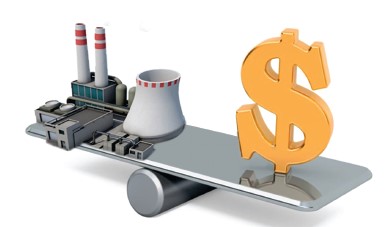
Why Nuclear Power is a Costly Affair? In the End, It Is All Economics!- By New Media Team
We often wonder why the cost information associated with any power supply is the first thing that comes to mind when we talk about it. Additionally, nuclear power is thought to be expensive when discussed.
There are clear reasons why nuclear energy is high priced. Nuclear energy requires excessive element of energy inputs, making it highly-priced to run. Nuclear uses direct capital to build factories, purchasing important fuels and imposing safety measures.
Protection Charges: Safety regulations must be followed by nuclear power plants, although enforcing them may be expensive. Electronic devices also cost more to eliminate than other products.
Long-term Operating Charges: A nuclear reactor’s lifetime operation and maintenance can be opulent, especially as plant life ages and needs protection and upgrades.
Delays and Regulatory Limitations: The manner of building an atomic reactor may be lengthy and complex, with substantial modifications to purpose delays and price overruns.
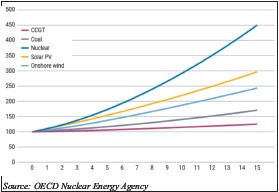
Measures to Lessen the Price of Nuclear Energy
Efficiency: Enhancing the expertise of nuclear energy plants can lead to a reduction in reliance on gasoline as a fuel source. This, in turn, has the potential to decrease overall costs associated with energy production.
Standardisation: Standardising the design and specifications of nuclear energy plants can effectively decrease construction costs and associated expenses.
Scale Up: Constructing a high-quality nuclear energy plant can result in significant economies of scale, positively impacting the overall cost effectivenessof the project.
Innovation: New nuclear devices had been evolved to permit advanced reactors to operate extra efficaciously and extra successfully than nuclear power plant life, and in the long run, lowering the
price of atomic strength.Regulatory Reform: Improving the regulatory process and reducing the demand for electricity resources can effectively decrease the cost and complexity associated with constructing and operating nuclear power plants.
In general, although nuclear strength will be expensive, there are smart steps that can be taken to reduce prices and gain more efficiency to satisfy our power needs.
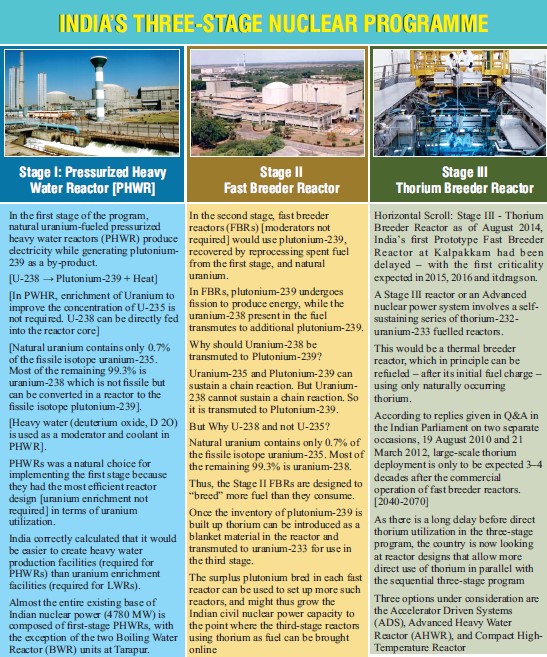
Commercial Use of Nuclear Energy – The Indian Context -By Our Correspondent
India, as a nuclear power, has expressed its intention to maximise the use of nuclear energy for commercial applications. India has been using nuclear energy for commercial purposes for
several decades.India has 22 nuclear reactors in operation, spread across seven nuclear power plants. At first glance, nuclear energy accounts for only about 3% of India’s total electricity generation. However, India has ambitious plans to increase this share to 25% by 2050.
In recent years, India has forged new alliances in the nuclear energy sector. One important development is the country’s partnership with the International Atomic Energy Agency (IAEA), which has given India access to nuclear technology and expertise. The IAEA has assisted India in developing its nuclear energy programme, and the partnership has been beneficial in providing technical support and training to Indian nuclear scientists and engineers.
In addition to its partnership with the IAEA, India has signed agreements with several countries to expand its nuclear energy programme. For example, India has signed a civil nuclear cooperation agreement with Japan that paves the way for Japanese companies to participate in the construction of nuclear power plants in India. Similarly, India has signed a memorandum of understanding with the United Kingdom to enhance cooperation in the field of civil nuclear energy, including research and development, training, and cooperation on safety issues.
Another important development is India’s partnership with Russia. Russia has been a longstanding partner of India in the field of nuclear energy, and the two countries have signed several
agreements over the years. Recently, India and Russia signed an agreement to build six nuclear power plants in India that will be based on Russian technology. This agreement is of great importance
as it will help India expand its nuclear energy programme and meet its growing energy needs.Finally, India has been working to develop its nuclear technology, including the Advanced Heavy Water Reactor (AHWR) and the Advanced Thorium-based Nuclear Reactor (AHNR). These technologies are expected to be safer, more efficient, and more environmentally friendly than existing nuclear technologies. India is also working to develop small modular reactors (SMRs), which are expected to be less expensive and more flexible than conventional nuclear power plants. India is also working to develop nuclear technologies that are expected to be safer, more efficient, and less expensive than existing technologies. These developments are important because they will help India meet its growing energy needs and reduce its dependence on fossil fuels.
The Nuclear Power Corporation of India Limited (NPCIL) is the agency responsible for operating India’s nuclear power plants. India’s nuclear programme primarily uses pressurised water reactors (PHWRs) and fast breeder reactors (FBRs). In addition, India plans to expand the use of light water reactors (LWRs).
Despite India’s commitment to nuclear energy, its nuclear programme faces several challenges. One major issue is safety. In recent years, its nuclear programme has been criticised for safety
regulations and potential environmental hazards. Environmental groups and residents living near nuclear power plants have raised concerns about the health risks associated with nuclear energy.
Another major challenge facing India’s nuclear programme is liability. The Indian government is seeking better liability protection for nuclear plant operators, but this is a contentious issue. Concerns have been raised about the potential cost of a nuclear accident and who would be responsible for paying damages.Finally, financing India’s nuclear programme remains a major challenge. Building and operating nuclear power plants can be expensive, and India’s nuclear programme has faced funding shortfalls in
the past. These funding shortfalls have led to delays in the construction of new nuclear power plants.In summary, India’s nuclear programme has been using nuclear energy for commercial purposes for several decades. However, several challenges need to be addressed, including safety concerns, liability issues, and financing problems. Despite these challenges, India remains committed to expanding the use of nuclear energy to meet its growing energy needs.

Nuclear Power – A Net-Nothing Power Alternative – By New Media Team
Nuclear power has clear benefits as a net-nothing power alternative, but when it comes to depressed element warming, it is the clear number one. Space and water warming give the reason for almost half of all energy demand for houses and provided about 2450 heap tonnes of direct CO2 diffusions in 2021. Although hydrocarbon deposits still meet over 60% of warming necessities, finding a reduced-element alternative is important to meet Net Zero hope.
Nuclear power has continually happened a point of controversy, but accompanying the increasing need to weaken element issuances and obtain net nothing targets, it should progressively appealing
answer for many nations, specifically in Asia. With the power requirements projected to evolve considerably in the coming age, nations like China, India, and Japan are curving to radioactive energy sources as a clean, trustworthy, and economical solution to meet their strength needs. This feature will investigate the reason nuclear energy is a clear first in major computer network-nothing story in Asia and allure potential to transform the domain’s strong countryside.Firstly, nuclear energy is a clean beginning of energy that produces practically no hothouse vapour diffusions. Unlike hydrocarbon deposits like bitumen and vapour, nuclear energy plants do not
emit colourless odorless gas or different hurtful contaminants into the air. This creates nuclear energy an attractive alternative for nations to lower their element footmark and meet their assurances under the Paris Agreement. The International Energy Agency (IEA) has identified nuclear energy as one of the key sciences wanted to reach net nothing diffusions by 2050.Secondly, nuclear power is the confidential information of strength that can specify a constant supply of power to meet the increasing demand in Asia. Nuclear energy can be used continuously,
offering a consistent and reliable source of power, unlike energy from renewable sources like the wind and sun. This is specifically important for nations that have knowing capacity shortages and blackouts earlier. For example, nuclear energy accounts for roughly 3% of India’s electricity generation, but it also provides resistant and confidential information on baseload capacity.Thirdly, a radioactive energy source is an economical solution that can help to lower the cost of power in Asia. While the straightforward capital costs of constructing an atomic reactor are extreme, the money needed to run a business is nearly low distinguished to different forms of strength. These resources that radioactive energy source can specify an inexpensive source of power in the unending, specifically as the cost of energy from un depletable sources resumes to fall. Furthermore, many nations in Asia are densely reliant on exotic nonrenewable energy, which may be high-priced and liable to be subjected to price excitability. Nuclear power can provide a household beginning of strength namely invulnerable to vacillations in all-encompassing strength markets.
However, it is important to accept the potential risks and challenges that guide nuclear energy. Safety concerns, waste administration, and basic increase are all issues that must be talked about to ensure that radioactive energy source is a secure and tenable answer for the future. The Fukushima trouble in Japan in 2011 emphasise the potential risks guiding nuclear power, and many nations
have achieved more absolute security requirements and upgraded emergency answer plans. Similarly, persuasive waste administration approaches are wanted to guarantee that environmental pollutant is harmlessly stored and does not pose a warning to human fitness or the surroundings.District warming and linked heat and capacity are famous approaches to improve strength adeptness and humble element impact, but the rude answer has existed slowly in a few regions. China is chief in the habit of cultivating basic-stimulate warming networks. The country’s best basic heating network to date, Warm-U-Clear-1, was instructed in November 2022, and the 900 MW Phase III is afoot.
According to enumerations, the basic warming approach has earlier prevented some 420,000 tonnes of direct CO2 issuances.Although the use of nuclear energy for precinct warming is still in allure babyhood, it presents an important opportunity to decarbonise a big beginning of diffusions. Europe now leads the experience in clean strength unification in district warming, accompanying about 25% of commune heat provided from inexhaustible beginnings. Leading this effort are nations like Sweden and
Lithuania, both of which have a compliant nuclear energy strategy. With renewed interest in basic volume due to worries about the security of the energy supply, it is obvious that the world must
examine every option to reduce allure element emissions, and basic warming is an unavoidable choice.Even for India, achieving net-zero emissions outside of nuclear energy within her capacity will be impossible. By 2030, India plans to generate 500 GW of energy from non-depletable sources and
meet half of its energy needs from these sources on an annual basis. However, a deliberate and comprehensive integration of renewable energy sources into the gridiron would raise two issues:
grid security and power costs.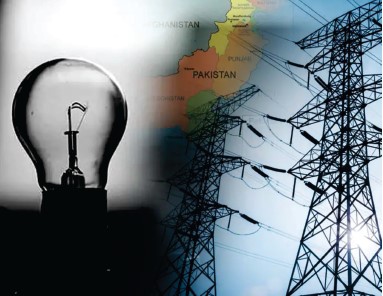
Nuclear Pakistan’s Energy Crisis – Can Nuclear Energy be an Option? – By New Media Team
Given the energy crisis and the dwindling foreign exchange reserves, coupled with the Pakistan Rupee reaching an all-time low against the USD, the government of Pakistan is facing challenges in
addressing the basic needs of the population. In such a setting, Pakistan views atomic energy as a practical option to meet the increasing energy demands.Foreign trade reserves in Pakistan have dwindled due to the current financial emergency. Fears of default are driving policymakers to search for energy alternatives. Nuclear energy holds the potential to serve as a clean and cost-effective energy source, offering several advantages over conventional fossil fuels and renewable sources. Unlike coal and natural gas, nuclear power generation produces minimal carbon dioxide emissions.
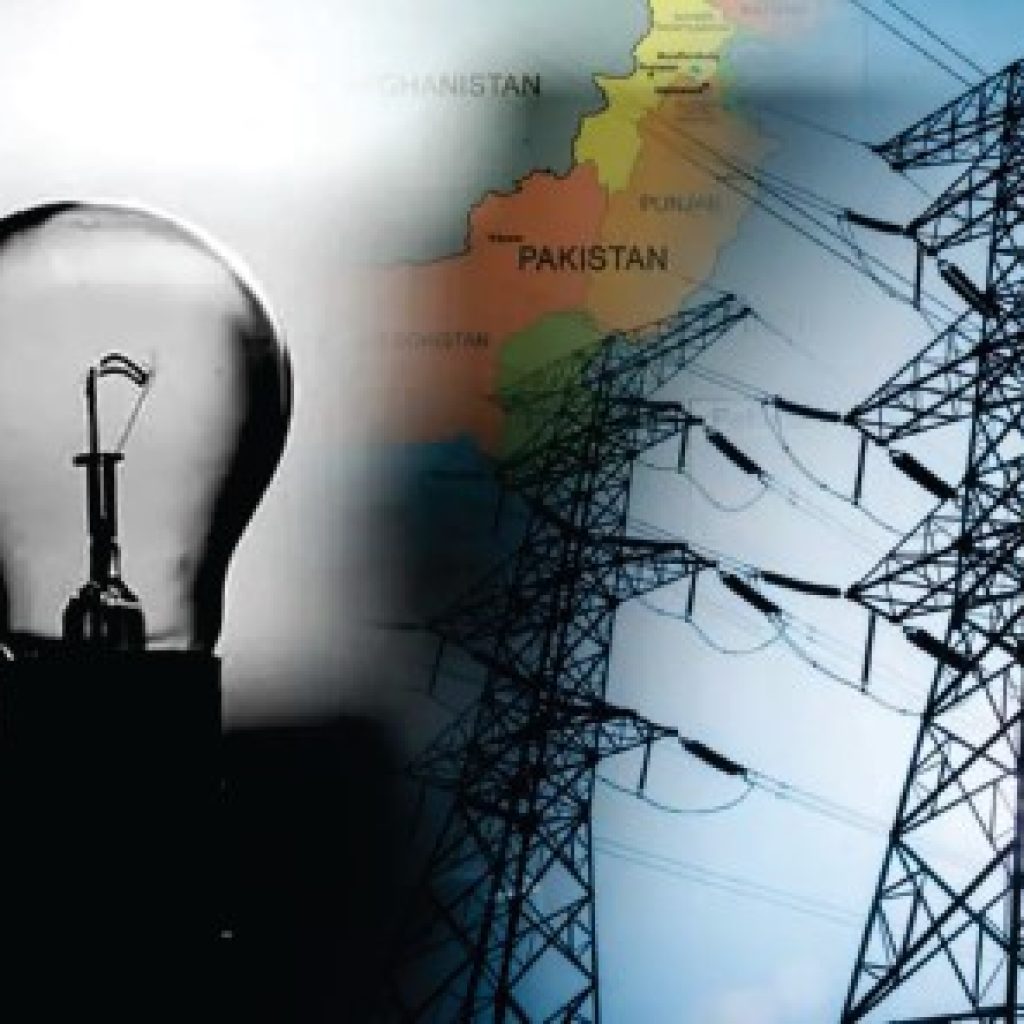
Nuclear energy could serve as a feasible solution for Pakistan’s growing energy demands, particularly considering its commitment as a member of the Paris Climate Agreement and its vulnerability to the impacts of climate change.
Pakistan currently faces challenges in its transmission and distribution capacity, which stands at approximately 22,000MW. As a result, power outages occur during the hot summer months, leading to significant disruptions. Additionally, over 50 million individuals remain unconnected to the national power grid, lacking access to electricity. Another significant concern in Pakistan’s power sector is the cost of power production, which has been a persistent problem.
Pakistan has indeed witnessed several severe events resulting from climate change in the past two decades, including devastating droughts, destructive floods in 2010 and 2018. The recent havoc caused by monsoon rains led to the loss of 1400 lives and displacement of 33 million people. What alternative does Pakistan gets to reduce the approaching dangers postured by climate change
and maintains its natural conditions by utilising clean energy?Will the routine procedures be satisfactory to meet the nation’s energy needs? Utilisation of atomic energy can provide the solution to these challenges. Pakistan has successfully utilised atomic energy for peaceful purposes, establishing itself as a reliable and proven venture in the global arena. Currently, the country operates six Nuclear Power Plants (NPPs) that effectively generate power for public consumption, demonstrating their operational efficiency.
There are predictions that in the near future, the frequency of climate-related disasters will increase. The impact this will have on the environment is directly linked to the country’s overall national security.
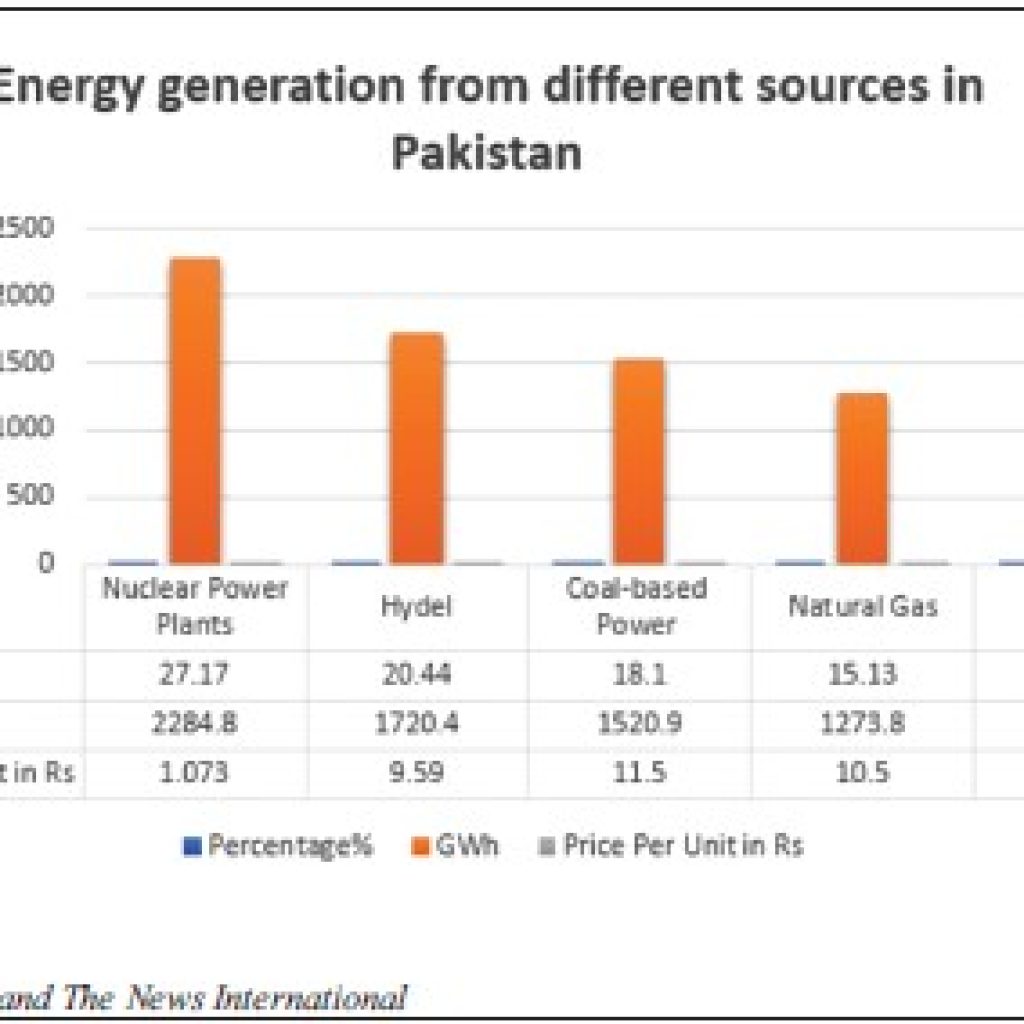
In December 2022 alone, Pakistan’s nuclear power reactors accounted for 27% of the country’s total energy needs. The cost of generating this energy was equivalent to half a US penny. Furthermore, nuclear power plants produced 2284.8 GWh in December 2022, establishing them as one of the top energy producers, followed by hydroelectric, coal-based power, natural gas, and re-gasified liquefied natural gas (RLNG).
Pakistan continues to struggle to meet the energy demands of its population due to its total dependence on hydroelectric and fossil fuel energy since achieving independence. These energy production methods are more susceptible to climate change disasters and have their own focal points and impediments. In hindsight, nuclear power plants, when operated in accordance with proper
security guidelines and regulations, provide a secure source of energy.According to the US Department of Energy, atomic energy is deemed the most secure method of power generation. It is referred to as a zero-emission source of clean energy, providing the highest level of environmental and societal benefits. In 2022, the US avoided over 471 metric tons of carbon emissions by relying on nuclear energy. This highlights that nuclear energy is a dependable and reliable source of power that States can benefit from, and Pakistan is no exception.
Meanwhile, Pakistan has seen a significant increase of +25 points in its overall score for the security and safety of its nuclear facilities. This achievement places the country as having the second-largest improvement since the introduction of the Nuclear Threat Initiative (NTI) Index in 2012. Pakistan has greatly benefited from its energy generation needs, which partially accounts for this improvement. As a result, the country’s nuclear power reactors have substantially reduced the amount of fuel that needs to be imported, leading to estimated savings of $6785.7 million when compared to coal, RFO (Residual Fuel Oil), and RLNG (Re-gasified Liquefied Natural Gas).
Atomic energy generation is superior suited to Pakistan’s needs due to its most noteworthy comes about in ecologically inviting, clean, and reasonable energy era. Since common fiascos are
wreaking destruction on the planet and costing valuable lives as well as common territories, Pakistan isn’t an special case. A feasible and common sense choice must be depended upon to supply the nation’s energy needs. Atomic energy generation is well-suited to Pakistan’s needs due to its impressive results in environmentally friendly, clean, and sustainable energy production. With natural disasters causing significant damage worldwide and taking a toll on lives and ecosystems, Pakistan is not exempt from these challenges. It is essential to rely on a feasible and practical solution to meet the country’s energy needs.To address the impacts of climate change while meeting the energy needs of its population, it is crucial for the country to place greater emphasis on nuclear energy generation.

Japanese Nuclear Technology – A Paradigm Shift from Setting Up Plants to Providing Parts
Due to concerns over the security and risks associated with nuclear accidents and disasters, Japan has shifted its approach and started supporting the production of components for thermal energy stations as part of a clean energy strategy. This approach appears to be driven by both cost considerations and safety concerns surrounding Japanese – built nuclear projects, at home and abroad.
The recent arrangement marks a significant shift for the Ministry of Economy, Trade and Industry, which previously focused on supporting the export of entire t h e r m a l e n e r g y s t a t i o n s m a n u f a c t u r e d b y J a p a n e s e companies such as Mitsubishi Heavy Industries and Hitachi. However, the increased cost of implementing stringent safety measures following the 2011 Fukushima nuclear disaster has adversely affected Japanese public private projects in countries like Turkey.

Since the 2011 disaster, nuclear development in Japan has come to a halt, and sluggish demand in other advanced economies such as the U.S. and the U.K. has had a detrimental impact on the nuclear power supply chains. Data from the business service and the Japan Atomic Industrial Forum reveals a significant decline in Japan’s parts exports, which dropped from 131.4 billion yen in fiscal year 2010 to 21.4 billion yen in fiscal year 2020.
To maintain competitiveness in the country’s nuclear power industry despite these challenges, the Ministry of Economy, Trade and Industry (METI) will shift its focus to comprehensive measures aimed at supporting key areas of strength to enable parts manufacturers to participate in international nuclear power projects more effectively.
As part of its efforts, METI will consider facilitating partnerships between parts manufacturers and overseas nuclear plant developers. It will also explore avenues to assist these manufacturers in obtaining necessary safety certifications in target markets, accumulate data on promising new undertakings, and secure support benefits long haul.
METI plans to replicate the actions taken by South Korea in budget requests for fiscal year 2023. South Korea initiated similar efforts related to nuclear power equipment in 2021, establishing a web-based entrance where organisations could share information and details about overseas projects as well as the technical capabilities and performance of parts manufacturers. METI will use the South Korean methodology as a reference while working out additional subtleties. Japan will also engage with other governments to encourage the utilisation of Japanese parts in various projects.
A government-backed framework would potentially collect information on overseas projects and standards more effectively than individual companies. As of now, METI has a stash of information on strategies and organisations abroad, gathered through global organisations in atomic power and past endeavours to advance Japanese fabricated thermal energy stations.
Mitsubishi Heavy Industries is a prominent company involved in the construction of nuclear containment vessels in Japan. It is worth noting that many of Japan’s nuclear power plants rely on domestically produced parts, with more than 90% of the components being sourced domestically.
Japan is home to a vigorous industry for atomic power parts regardless of late misfortunes, with providers logging more than 750 billion yen ($6.1 billion) in deals each year from around 10 million items. Many nuclear plants in Japan, particularly those commissioned during the 1970s or later, were constructed using over 90% domestically-produced parts.
A few players are now growing abroad. IHI has sent out control vessels for atomic reactors to the U.S., and put resources into NuScale Power, an American start-up known for its small modular reactor (SMR) technology. Ebara has sent out cooling siphons to the U.S.
METI expects that by working with the private sector to build on its relationships with foreign nuclear reactor builders and authorities, it can unlock significant opportunities for Japanese parts makers. The hope is that Japan can supply parts and materials for new nuclear projects overseas, such as containment vessels and valves for small nuclear reactors, and fuel rods for high-temperature gas reactors. The industry ministry sees potential business opportunities in the areas of parts replacement and maintenance within the nuclear power industry.
Campaigns in the U.S. and Europe to cut carbon emissions are establishing a better climate for atomic undertakings. France has been making progress toward new plants in the U.K. what’s more, Finland, and English Business Secretary Kwasi Kwarteng as of late let neighborhood media know that the nation could move toward seven new thermal energy plants by 2050.
Campaigns in the U.S. and Europe to reduce carbon emissions are creating a more favourable environment for nuclear projects. France, for example, has been making advancements in developing new nuclear plants in the UK and Finland. Former British Business Secretary KwasiKwarteng, in an interview with local media, stated the country’s consideration of building seven new nuclear power plants by 2050.These developments indicate an increasing recognition of the role nuclear energy can play in achieving carbon reduction goals and ensuring a sustainable energy future.
Plans are underway in the U.S., U.K. and France to test small modular reactors and other next generation technology. The Nuclear Energy Institute, a U.S.-based industry association, predicts
that the global nuclear power market could roughly quadruple between 2020 and 2050 to as much as $400 billion.Both the United States and England face challenges in terms of domestic parts suppliers, partially due to the slowdown in new construction projects in recent years. This has resulted in a decreased capacity for manufacturing and supplying nuclear power plant components. On the other hand, China and Russia have made significant progress in building new nuclear capacities. However, due to Russia’s involvement in the Ukraine conflict, industrialized nations are hesitant to source nuclear parts from these countries.
Japan is synonymous for innovation and technology. It is natural for the world to show keen interest in the innovation of Japanese organisations.
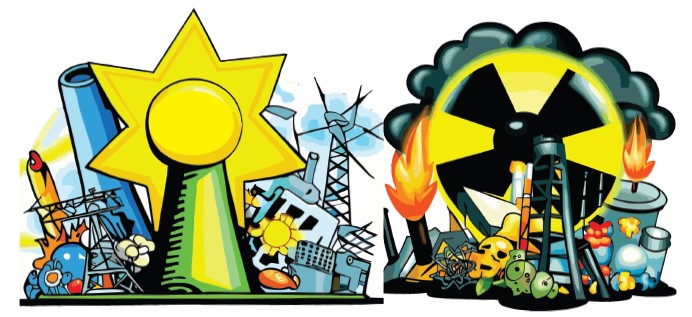
Pros and Cons of Nuclear Energy. Is it a Commercially Viable Option?

Ramdas Shenoy, Consulting Editor
Energy is the ultimate requirement for our survival. Countries can collapse if their energy needs are not met. Often, when we discuss clean energy in today’s context, nuclear energy plays a significant role in preserving air quality by generating substantial amounts of carbon-free electricity. In the US alone, it powers communities in 28 States, and contribute to many non-electric applications, ranging from medicine to space exploration.
The Workplace of Thermal Power inside the U.S. Division of Energy (DOE) centres its examination basically around keeping up with the current armada of reactors, growing new high level reactor advances, and further developing the atomic fuel cycle to expand the manageability of the energy supply. Below are some of the main advantages of nuclear energy and the challenges currently facing the industry today
Clean Option Create Jobs Nuclear energy is the primary source of clean power in the US, generating nearly 800 billion kilowatt-hours of electricity annually and supplying over half of the country’s emission-free electricity. This helps avoid more than 450 million metric tons of carbon emissions each year, equivalent to removing 100 million vehicles from the road. The nuclear industry gives generously compensated, high ability occupations and venture that upholds nearby networks. Development of another thermal energy station produces large number of jobs on location and thousands more in the network. For each 1,000 MWe of atomic limit built, exactly 200,000 job years of employment is generated. Nuclear industry pay will, in general, be higher than normal, mirroring the expert abilities of the employees. 
Nuclear energy projects increase the GDP development in the short and long haul. The nuclear industry helps to support jobs directly and indirectly. For each direct job, approximately 2.5 to 3.5 indirect and induced jobs are generated.
National Security Card
A strong civilian nuclear sector plays a key role to a country’s national security and energy diplomacy. It gives a sense of self-sufficiency in the energy domain and also identify opportunities on the global platform.
Challenges of Nuclear Energy
Wrong Perception
Commercial nuclear energy is in some cases seen by the population as a risky preposition. This discernment is in many cases in view of three worldwide
atomic mishaps, its misleading relationship with atomic weapons, and the way things are depicted on well known network shows and movies.Used Fuel, Transportation, Storage and Disposal
Nuclear is always perceived to be something dangerous, specifically with regards to its transportation, storage and disposal.
Any action connected with the nuclear cycle, that produces or uses radioactive materials creates radio-dynamic waste. The administration of radiation emanating radio active material involves concern and separates nuclear waste. The population at large looks for assurance for safe administration of radio active wastes. One has to appreciate that not all nuclear wastes are especially perilous or challenging to oversee when contrasted with other harmful industrial wastes.
High Working Capital
Challenging economic conditions have left the nuclear industry attempting to remain competitive. It requires dedicated efforts to modernize plant frameworks to reduce operational and maintenance costs while enhancing overall performance.
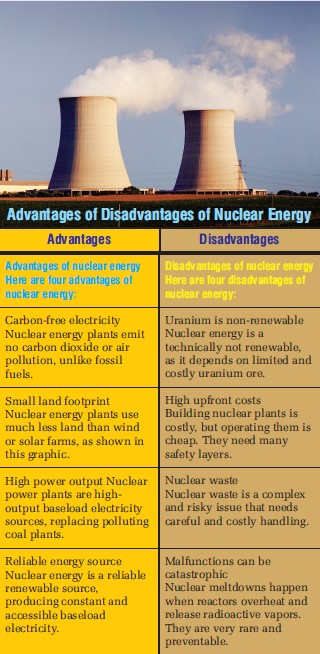
Scaling Up
Building a nuclear power plant is not easy as it seems, and there are numerous entry barriers for stakeholders with regards to cost, technology, compliance and safety standards. Conventional reactor designs are considered multi-billion dollar infrastructure projects.

Impact Measurement Ignites Growth in India’s CSR Landscape
Corporate Social Responsibility (CSR) serves as a crucial mechanism empowering companies to undertake projects and programmes that support the underprivileged and hold themselves accountable for the proper execution of these initiatives. Notably, India emerged as a trailblazer in legally mandating CSR on April 1, 2014, through Section 135 of the Companies Act. This provision made it compulsory for profitable companies to engage in CSR initiatives and invest in projects with a positive social impact. According to this rule, these companies are to allocate 2 per cent of their average net profit from the preceding three financial years to development projects under CSR. This exploration will delve into the driving forces behind this transformative shift and its far-reaching implications.
For companies that practised responsible initiatives even before the formal coining of the term CSR, this transformative phase has encouraged them to reassess and re-strategies their implementation models and thematic areas. Also, they have now developed monitoring frameworks and policies to align with the legal requirements and effectively contribute to societal development. Since 2014, Corporate Social Responsibility has experienced noteworthy transformations, elevating it to a more integral aspect of modern business practices. Transcending the sole pursuit of profits, CSR now represents a company’s commitment to contribute to society and the environment.
The new regulations played a pivotal role in providing a platform to support the impoverished and underscored the importance of inclusive growth and progress as we discussed development. Companies that embarked on this journey were legally obligated to devote time to fulfilling regulatory requirements and primarily focused on compliance. In India, companies directed their efforts in engaging with communities and addressing issues directly linked to their business objectives and goals. The investment in CSR has increased by 85 per cent since 2014-15, indicating that companies are enthusiastic about making a tangible impact on the ground. This is a positive development as CSR can help address some of the most pressing social and environmental challenges facing the world today.
Several factors have contributed to the increase in CSR investment, and this is a welcome development. CSR can help a d d r e s s e x t e n s i v e s o c i a l a n d
environmental challenges, such as healthcare, education, skill development, i n e q u a l i t y , c l i m a t e c h a n g e , environmental degradation, and many others. By investing in CSR, companies add to their intrinsic value by undertaking projects they really care about and eventually positively impact society. Some companies have also established Section 8 companies (foundations/trusts) according to the law, and have been independently implementing CSR projects without involving implementing agencies. On the other hand, some companies actively seek NGO partners to collaborate on designing, creating, and implementing projects together. CSR has now become a widely used and
accepted term, with companies carefully considering their CSR agenda to assist marginalised communities while enhancing their brand’s reach and positively influencing beneficiaries. C o m p a n i e s n o w u n d e r s t a n d t h e importance of strategising CSR initiatives that align with their brand’s focus. CSR has evolved beyond mere
philanthropy, and Indian companies recognise that it is an integral part of their b u s i n e s s , b r a n d – b u i l d i n g , a n d sustainability efforts. While CSR has always been about executing impactful projects and benefiting the needy, the new regulations have added mandatory CSR spending requirements, activities listed in Schedule VII, and specific reporting obligations. However, this has led to a need for introspection and understanding of the impact of CSR efforts from a more strategic perspective. The focus now extends to leveraging in-house talent, targeting underfunded areas/locations with genuine needs, scaling up researchbacked and innovative projects, and aligning CSR initiatives with the Sustainable Development Goals (SDGs). T h e C O V I D – 1 9 p a n d e m i c h a s highlighted the importance of corporate responsibility and resilience in times of crisis. Many companies have adjusted their CSR strategies to provide support to their communities by offering essential provisions throughout the pandemic. Stakeholder-centric approaches and increased digitalisation have become crucial elements of CSR as businesses are confronted with the challenges brought about by the global health crisis. The recent amendments have also led to changes in reporting. Data concerning a company’s CSR budget, expenditures, the existence of a CSR Committee,
executed activities, surplus generated, administrative overheads, and CSR registration number leave ample room for transparency. The focus on CSR efforts remains driven by the Board with a constant commitment to improving and bettering the welfare of communities. Recent amendments to the CSR Law emphasise the tracking and measurement of impact indicators. Additionally, these c h a n g e s e n c o u r a g e m e a n i n g f u l c o l l a b o r a t i o n s w i t h r e p u t a b l e implementing agencies capable of
executing CSR projects on the ground. With growing awareness of ESG ( E n v i r o n m e n t a l , S o c i a l , a n d Governance) risks and opportunities, investors have started integrating sustainability factors into their decisionmaking processes. Socially Responsible Investing (SRI) and Impact Investing have gained traction, with investors
seeking financial returns and positive societal and environmental impacts. This trend has incentivised companies to enhance their CSR performance to attract responsible investment and gain a competitive edge. Companies have recognised the importance of engaging a broader range of stakeholders, including employees, communities, NGOs, and governments. Creating shared value has become p o p u l a r, e m p h a s i s i n g t h a t C S R initiatives should address societal needs while generating business value.
Collaborative partnerships with stakeholders have played a pivotal role in addressing complex sustainability challenges.CSR has made remarkable progress in its scope, integration, and impact since 2014. This evolution can be attributed to t h e g r o w i n g r e a l i s a t i o n a m o n g businesses of the crucial importance of aligning their operations with societal and environmental goals. Today, CSR is no longer seen merely as a token effort but as an integral aspect of a company’s overall strategy and ethos, ingrained in its core values and business practices. The journey of CSR continues to be driven by a company’s ongoing commitment to shaping a more sustainable and responsible future for businesses and society at large. Amidst various modifications and changes, there has been a strong
emphasis on measuring the impact of CSR activities undertaken by companies. The results from impact studies provide insights into the effectiveness of a company’s CSR efforts and guide the selection of appropriate impact indicators and metrics during the design of CSR projects. The growing focus on impact measurement has become a cornerstone of CSR activities, offering invaluable insights into the tangible difference companies create for various stakeholders. To a c h i e v e a c o m p r e h e n s i v e understanding of the societal impact of their projects, companies are mandated to conduct impact assessments, a vital process in grasping the community’s utilisation of the project. These assessments involve evaluating the project’s progress and reach, allowing the identification of design gaps, and facilitating their resolution. Additionally,
they aid in developing strategies to mitigate potential issues and effectively manage corporate CSR initiatives. Conducting impact assessments lends credibility to the project’s implementation in the field. The increasing emphasis on such studies signifies that companies are genuinely interested in assessing the real-time impact of their projects on the ground. Companies and implementing partners acknowledge the advantages and importance of these assessments as they provide tangible justifications for their w o r k a n d c o n t r i b u t e t o p r o j e c t sustainability. Moreover, the ongoing need for impact studies is driven, in part, by the requirements set by funders and donors. These stakeholders seek transparency and accountability through concrete data and evidence of actual change resulting from the projects. Following the amendment, impact studies in India can now be conducted by proficient independent agencies specialising in evaluating progress and effectiveness. The Board has the authority to determine the eligibility criteria for selecting the independent agency to conduct the impact assessment. There are national and internationally accepted frameworks available for measuring impact indicators, which help identify needs, measure actual progress, and evaluate impact. This enables the alignment of objectives and the strategic planning of CSR projects, thus enhancing on-ground performance and shaping future interventions. An essential aspect of impact assessment involves analysing both qualitative and quantitative data. The methodology used for study and data collection requires appropriate tools, approaches, and sampling methods. Identifying relevant stakeholders is vitally important, and ensuring precision in field observations and interviews is essential. In conclusion, conducting impact assessments transcends mere regulatory obligations for certain companies; rather, it serves as a pathway to gaining profound insights into their investments and fostering effective collaboration with implementing agencies. This approach facilitates the enhancement of impact indicators and enables the attainment of optimal outcomes from CSR projects. I n m y v i e w, m a k i n g a p o s i t i v e contribution to the community should not be considered an elective pursuit for corporations. Instead, it ought to be a responsibility they willingly undertake.
Corporate India possesses the potential to shape culture and bring about substantial and meaningful change. CSR should go beyond superficial compliance and instead reflect a more profound sense of purpose and importance.Ruchika Malhan Varma
is the Chief Marketing Officer of Future Generali India
Insurance India Company Ltd.